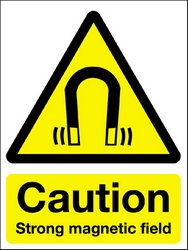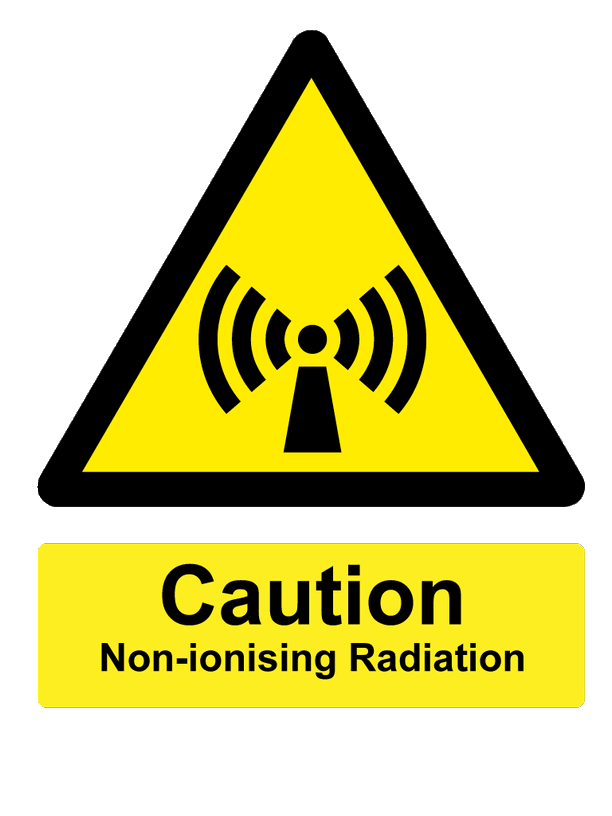Action plan
Where it cannot be demonstrated that exposures do not exceed an exposure limit value, it is a requirement under regulation 7 of the Control of EMF at Work Regulations 2016 to make and implement a suitable and sufficient action plan to ensure exposures do comply.
Where relevant, the action plan should include consideration of:
- alternative working methods involving lower exposure
- replacement equipment producing lower exposures
- technical measures to reduce emissions of electromagnetic fields, including interlocks, screening or similar protection measures
- demarcation and access control
- maintenance programmes for equipment, workstations and workplaces
- design and layout of workstations and workplaces
- limitations on the duration and intensity of exposure
- availability of suitable personal protective equipment
The purpose of the action plan is to achieve compliance with the exposure limit values, so whenever there is evidence that the exposure limit values have been exceeded, employers are required to identify and implement whatever changes are needed to reduce exposures below the exposure limit values.
Where an action plan is required, the employer must keep a written record of the most recent plan.
Risk management
It is a requirement to implement measures to either eliminate risks identified by an EMF-specific risk assessment or reduce them to a minimum. The approach taken should follow the principles established by the Management of Health and Safety at Work Regulations 1999. In particular, employers are required to consider:
- technical progress
- potential to restrict access to parts of the workplace
- availability of measures to control the production of electromagnetic fields at source
The practical application of these principles should lead to consideration of a number of control measures. These are presented below:
- It must be ensured as far as reasonably practicable that where equipment likely to generate a strong EMF radiation is purchased or borrowed, that the supplier provides details of the likely EMF output characteristics and recommended control measures. Such data should already be provided if the equipment is CE–marked and falls within scope of the Machinery Directive, but nevertheless it is recommended that the equipment is re-tested locally to confirm its EMF output.
- The immediate vicinity of unmanned, high-power sources of EMF radiation (e.g. radio-transmitters) shall be suitably fenced off to prevent unauthorized access.
- Equipment generating strong EMF radiation shall be positioned as far away as reasonably practicable from areas normally occupied by staff and others.
- There shall be no unnecessary metal objects near any radiating EMF device. The presence of such objects may result in high-intensity fields in certain locations. Where it is necessary for metal objects to be present near a device radiating EMF, they shall be appropriately grounded.
- Shielding or screening of equipment shall be carried out as necessary to reduce EMF radiation exposure.
- Equipment generating high-power microwaves shall not be tested without an appropriate load connected to its output. The power generated should never be allowed to radiate freely into occupied areas.
- Safety procedures to be followed by operators of equipment generating strong EMF radiation shall include the following requirements:
- Replacement components, in particular, waveguides, gaskets, flanges, etc., must be such that the equipment’s EMF radiation characteristics remain acceptable;
- Testing of an EMF-radiating device either before or after completion of repair work must be carried out in accordance with this SHE code work and should normally be carried out after protective shields, waveguides and other components have been put back in their designated locations as far as reasonably practicable;
- Adjustments of voltages, replacement or dismantling of EMF-radiation-generating components or refitting waveguides should be undertaken by people trained and competent to undertake such tasks (see Appendix 4); and
- Maintenance staff and operators of EMF radiation generating devices shall be suitably aware of the potential hazards of EMF radiation.
- Managers responsible for new or existing EMF-radiating-equipment subjected to modification/maintenance should ask the relevant EPA to undertake EMF surveys with appropriate test equipment.
- Warning signs as shown below indicating the presence of EMF radiation shall be posted as appropriate where exposure above action levels may occur. Warning signs can be obtained from SHE Group. The sign in the first panel is suitable to warn of the presence of strong low frequency magnetic fields, whilst the sign in the second panel is suitable to warn of the present of strong radiated fields.

|

|
- Warning signs, as shown below, prohibiting individuals with active medical devices from entering areas where EMFs exceed the reference levels shall be posted at all entrances. Warning signs can be obtained from SHE Group.
- EMF-generating equipment may present additional hazards such as X-ray emission and electrical dangers which will have to be evaluated separately (see SHE codes specific to these additional hazards).
